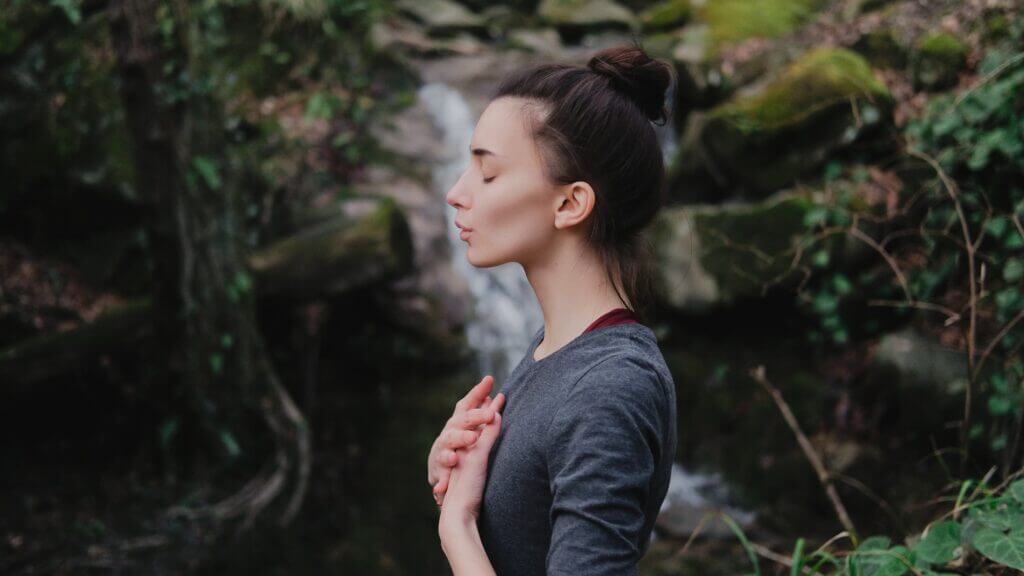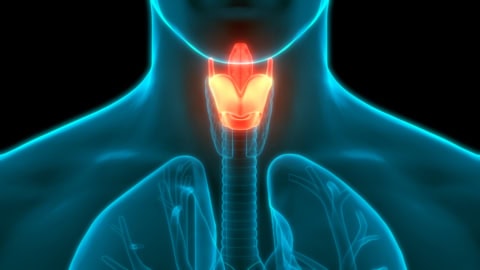Although it seems to be the most natural thing in the world, many people have forgotten to perform chest breathing and abdominal breathing correctly. This is strange because our breathing reflex works unconsciously, we don't have to think about it. How does this happen?
Many who sit at a desk all day or have a stooped posture constrict their breathing organs - they simply have too little space to function well. The hectic pace of everyday life also takes its toll. Some suddenly notice during their first singing or yoga class that they can no longer get into deep chest breathing or abdominal breathing.
People with respiratory diseases in particular have difficulty breathing. They experience shortness of breath during exertion, are generally more short of breath or simply can no longer breathe in deeply because they feel tightness in the chest.
Asthma, for example, is a common respiratory disease. It affects about one in 20 people. Also, every third patient with long covid or post-covid suffers from persistent breathing difficulties for several weeks. Lung function is particularly often impaired after a severe course of the disease.
Many sufferers find help and relief through breathing therapy, yoga or singing lessons. Our breathing muscles and the auxiliary breathing muscles can be trained like all muscle groups. This allows us to target our breathing spaces and expand our lungs: through abdominal breathing with the help of the diaphragm, and through the flanks or even the back with the help of the outer intercostal muscles.
With singing beginners, I therefore first try to find out whether they are able to use their breathing muscles in an active and supportive way. Are they able to release the air in a measured way, or is there too much air on the tone? In other words, are they actively using their intercostal muscles, or are they instead working with breath pressure and squeezing the notes? Are the abdominal and throat muscles relaxed or tense?
Chest breathing and abdominal breathing
Many participants in my workshops and classes are very interested in learning about how breathing works. Not only to improve their singing, but also to make use of this knowledge in everyday life.
Our breathing runs unconsciously, day and night, whether we are asleep or awake. And it adapts: When we put our body under stress, we need more oxygen, our breathing becomes shallower and faster. Oxygen is our fuel, our body gains energy from it.
Everyone knows the two different ways of breathing: shallow chest breathing benefits us when we do strenuous things such as running or dancing. Deep abdominal breathing, on the other hand, comes in almost automatically when we are relaxed, e.g. whenever we sleep. With this deep breathing, which is also called "diaphragmatic breathing", we take in 30 percent more air than with shallow chest breathing.
The diaphragm
The diaphragm is our most important breathing muscle. It is a dome-shaped muscle-tendon plate that separates the thoracic and abdominal cavities. When the diaphragm contracts and moves downwards, the lungs are pulled apart. The resulting suction draws outside air into the lungs. At the same time, the organs in the abdominal cavity are pushed downwards. Therefore, when breathing deeply, the abdomen bulges forward. This is why this deep, calm breathing is also called "abdominal breathing". When breathing out, the diaphragm relaxes, moves upwards and thus pushes the used air out of the lungs.
The muscles of the chest and shoulder girdle also help to catch your breath. Especially during exertion, you can feel the entire chest rise and fall. In chest breathing, the lungs are pulled apart on all sides to suck in air. Chest and abdominal breathing are not separate, both are needed simultaneously for normal breathing. At rest, however, abdominal breathing predominates, while chest breathing predominates during exertion.
A first breathing exercise
One of the first breathing exercises I do with my students is to stand up and breathe deeply. Place your hand on your abdomen to feel the abdominal wall rise and fall. After a few deep breaths into the belly, you can shift your focus to a long exhalation: imagine that your exhalation is blowing out a candle, long and evenly. Soon you will notice that with this exercise you manage to extend your exhalation phase many times over.
By the way, deep and even breathing not only supplies the body with oxygen, but also makes us calmer. Abdominal breathing appeals to the calming centre. The saying: "Take a deep breath" is not just a figure of speech. Just a few conscious, deep breaths help you to relax.






